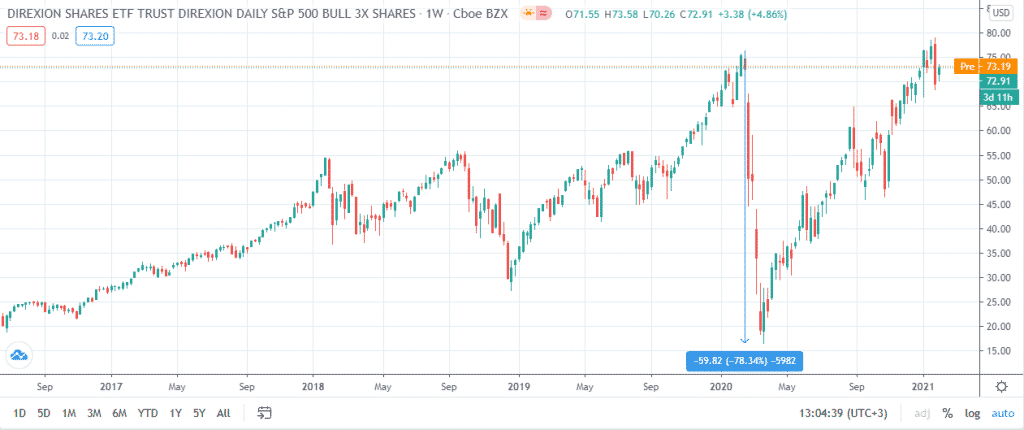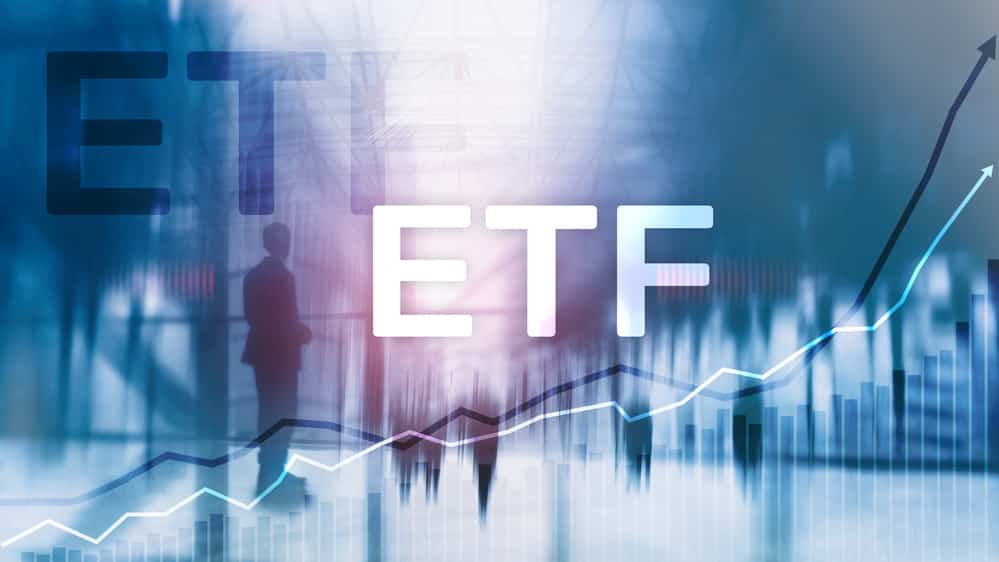What is a leveraged ETF?
An ETF (exchange-traded fund) is a group of securities traded under one ticker symbol like typical equity. The included assets are part of the index tracked by the ETF. For instance, an ETF tracking the S&P 500 index comprises the 500 equities in the index. Subsequently, the ETF will move with the same momentum as the index. For example, when S&P 500 index moves by 1%, the ETF will move by the same percentage.
With that refresher, let’s advance to the leveraged ETF concept. In trading, the term ‘leverage’ refers to the use of borrowed funds to amplify one’s gains. For instance, with a leverage ratio of 200:1, your gains will be higher than if you used a ratio of 100:1.
Leveraged ETFs use a similar principle. It is an ETF that uses debt and financial derivatives to magnify the returns of the index it is tracking. For instance, if the leveraged ETF has a leverage ratio of 3:1, a movement of $100 on the upside for the index will equate to returns of $300 for the leveraged ETF.
However, just like in leverage itself, this trading product brings along increased risks. To understand this ideology, consider the following example.
The Nasdaq-100 index is trading at $13,450, while the corresponding leveraged ETF, ProShares UltaPro Short QQQ (SQQQ), is at $12.90. On day 1, the index rises by 10%. Since SQQQ has a 3X leverage, it will record a surge of 30% (10%*3). Now the index is at $14,795, while the leveraged ETF is at $16.77. On day 2, the index falls by 20%. Subsequently, the leveraged ETF will drop by 60%. The index and SQQQ will now be at $11,836 and $6.71, respectively. Overall, the index will have dropped by 12%, while the leveraged ETF will be down by 47.98%. This is an indication that leveraged ETFs are meant for short-term speculation rather than as a long-term investment.
Pros and cons of leveraged ETFs
Pros
- If the market moves in your favor, the gains will exceed those of the primary index.
- As a trader, you have access to a wider array of securities.
- The inverse leveraged ETFs allow one to record profits even when the market is headed downwards.
Cons
- Under highly volatile conditions, the resultant losses tend to exceed those of the underlying index.
- The expense ratios and fees of a leveraged ETF are usually higher than those of the ordinary ETF.
- The trading product is not ideal as a long-term investment.
Example of a leveraged ETF
To have a better understanding of leveraged ETFs, let’s look at a real-world example. Direxion Daily S&P 500 Bull 3X Shares (SPXL) is one such entity. It provides the trader with leveraged access to the companies within the S&P 500 index. Assuming that the market reacts as you had predicted, one movement will yield three times the ETF price movement. However, your potential losses are just as amplified as the probable gains. The resetting of this leveraged ETF happens every trading day.
This financial instrument is ideal as a short-term trading option rather than a long-term investment product. A comparison of SPXL and the S&P 500 reveals the intensity of the risks associated with a leveraged ETF.
In February 2020, S&P 500 reached a high of about $3,400. In came the coronavirus pandemic, and the world went into an economic crisis. In March, the index had dipped to a low of about $2,200. The drop represented a decline of about 35.20%.

Now let’s look at the performance of SPXL during the same period. From a high of about $76.20 in February, COVID-19 pushed the leveraged ETF to a low of $16.54 in March. This was a decline of 78.34%—evidently, a trader who bought and held the asset as a long-term investment incurred heftier losses.




